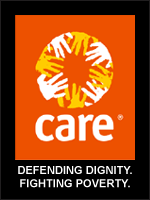HA NOI — Nguyen Anh Tu, 22, was brought to Ha Noi’s Viet Duc (Viet Nam-Germany) Hospital "drowning on land" – as doctors called it.
Tu had been involved in a traffic accident while driving his motorbike on National Highway 1A from Ha Noi to Nam Dinh City.
He was choking to death because blood was pouring into his lungs. Despite frantic efforts by Dr Hoang Gia Du to open his airways, Tu died.
He died unnecessarily because no one at the scene could perform a simple tracheotomy on the young man. It’s a relatively simple technique where an incision is made in the neck when the upper airways are blocked. If it had been performed quickly his life might have been saved, Du said.
 Making matters worse, Tu had to be taken to a hospital 50km away by car because there were no medical centres nearby.
Making matters worse, Tu had to be taken to a hospital 50km away by car because there were no medical centres nearby.The World Health Organisation said pre-hospital trauma care for victims of road traffic accidents in Viet Nam were woefully inadequate considering the fact that there were about 32 life-threatening accidents every day on the country’s roads.
"The human and financial resources available result in an enormous under-coverage," said Dr Jean-Marc Olive, WHO representative to Viet Nam.
Only five of Viet Nam’s 63 provinces and cities have a 115 paramedic service – Ha Noi and Thai Binh in the north, Hue and Da Nang in the central region, and HCM City in the south. Other areas are dependent on volunteers or local medical staff, according to WHO Viet Nam.
There are just 26 pre-hospital trauma care centres for victims of road traffic accidents in the country, according to the Ministry of Transport.
Furthermore, Do Thuy Lan, co-ordinator of NGO Counterpart International’s pre-hospital trauma care development programme, said that training in pre-hospital trauma care techniques in Viet Nam was inadequate.
"Prompt and appropriate first aid saves lives," said Lan. Road accidents account for more than 90 per cent of all deaths by water, air or land, according to Than Van Thanh, chief of the secretariat of the National Traffic Safety Committee.
Out of 9,100 accidents by boat, plane or motor vehicle in the first three quarters of this year in the country, more than 8,520 happened on the roads, according to the traffic safety committee.
Viet Duc Hospital records showed that just 5 per cent of patients injured on the country’s roads received pre-hospital care – of which just half received the appropriate medical attention.
"Late or improper first aid is the reason why the death toll is so huge," Thanh said.
The 9,100 serious accidents in the first three quarters of the year resulted in 8,190 deaths, about 96 per cent of the total death toll on land or water.
Making matters worse, Olive said that due to a shortage of ambulances, most accident victims were taken to hospital by taxi or motorbike, which often further exacerbated their injuries.
According to WHO Guidelines on pre-hospital trauma care, most deaths occurring in the first few hours after an accident are the result of airway obstruction, respiratory failure or uncontrolled haemorrhaging. WHO said if managed correctly, those deaths could be prevented.
"Prompt appropriate pre-hospital care may also reduce the incidence of long-term disability," Olive said.
A brighter future?
In a bid to minimise road deaths, the Ministry of Health has formulated a five-year plan to improve pre-hospital trauma care in the country.
Under the 2015-20 programme, paramedics, posted at first aid stations every five to six kilometres along highways, would be able to reach the scene of an accident in 10-15 minutes.
WHO is also working with the ministry to develop a standardised pre-hospital trauma care training programme for health workers, volunteers and village health workers. Initially, 3,000 people would receive medical training over the next year, Olive said.
Meanwhile, the Viet Nam Road Administration recommended that nine rescue centres should be established at accident blackspots, such as on Highway No 5 in Hai Duong and Highway No 4D in Lao Cai. Each centre, which is estimated to cost VND15 billion (US$811,000), would cover a 50km radius.
Counterpart International is also establishing a two-year pre-hospital trauma care development programme under which about 600 volunteers – taxi and xe om drivers in Ha Noi, Da Nang and Khanh Hoa Province– will be given first aid training.
The project, which will run until next June, will establish an informal 115 service, which will be dependent on local hospital first aid teams in Khanh Hoa.
The Handicap International is also setting up five pre-hospital trauma care points at accident blackspots along the highway in each district between HCM City and Dong Nai.
First aid points, staffed by volunteers and red cross members, will be completed by the end of 2011, said Thai Quoc Hung, NGO’s First Aid manager.
But to really improve pre-hospital trauma care services in Viet Nam, WHO said there should be greater investment in medical facilities. The world health body also said the 115 emergency hotline should be expanded and that there should be greater first aid training.
Olive also suggested that rapid first response teams travelling by motorbike should also be established.— VNS
by Tran Hoa and Nguyen Vu (26-11-2009)
(Picture) Interns at Kontum medical high school practise first aid. A lack of first aid training has led to an increase in road deaths in the country. — VNA/VNS Photo Tran Duc Lam









Aucun commentaire:
Enregistrer un commentaire